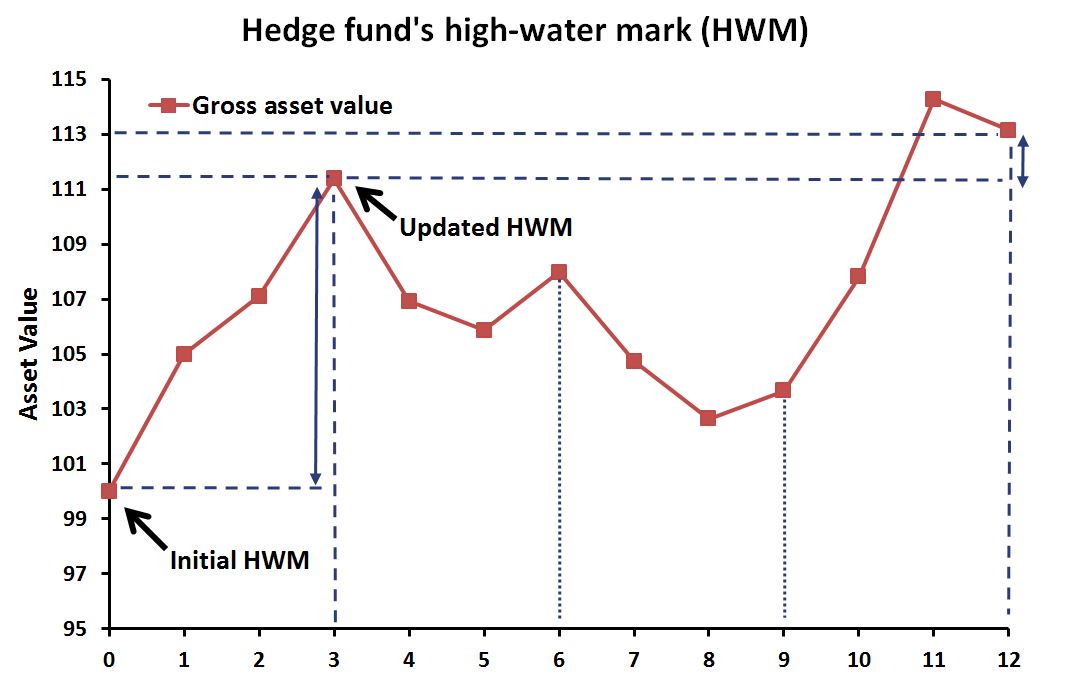
High water mark is the highest value that a portfolio has reached.
Computation of high water mark portfolio value is typically taken on the date when performance fees are charged.
The portfolio manager can charge performance-based fee only on increase in portfolio value in excess of the previously achieved high water mark.
High water marks ensure that investors do not pay performance-based fees repeatedly for the same amount of performance or for poor performance.
If an initial contribution of ₹10 lakh rises to ₹12 lakh, a performance fee would be payable on the ₹2 lakh made. Subsequently, the next performance fee will be charged only if the portfolio value goes above ₹12 lakh and only on the amount over ₹12 lakh.
A high water mark is used in investment funds to ensure that investors do not have to pay performance fees for bad or mediocre performance. High water marks have been particularly important for investors in hedge funds which have traditionally operated on a steep “2 and 20” fee structure (which means they charge 2 per cent of assets invested and 20 per cent of any appreciation in value of the funds). A high water mark ensures that if the net asset value of the fund falls in one investment period (a month, a quarter, a year – whichever is defined in the funds prospectus) that the performance fee can only ever be charged on any outperformance above the highest the fund had ever reached in a previous investment period. So if the fund falls 50 per cent to, say, Rs.15,00,000 from a high of Rs.30,00,000 in one investment period and rises 100 per cent to Rs.30,00,000 in the next that no performance fee is charged.


